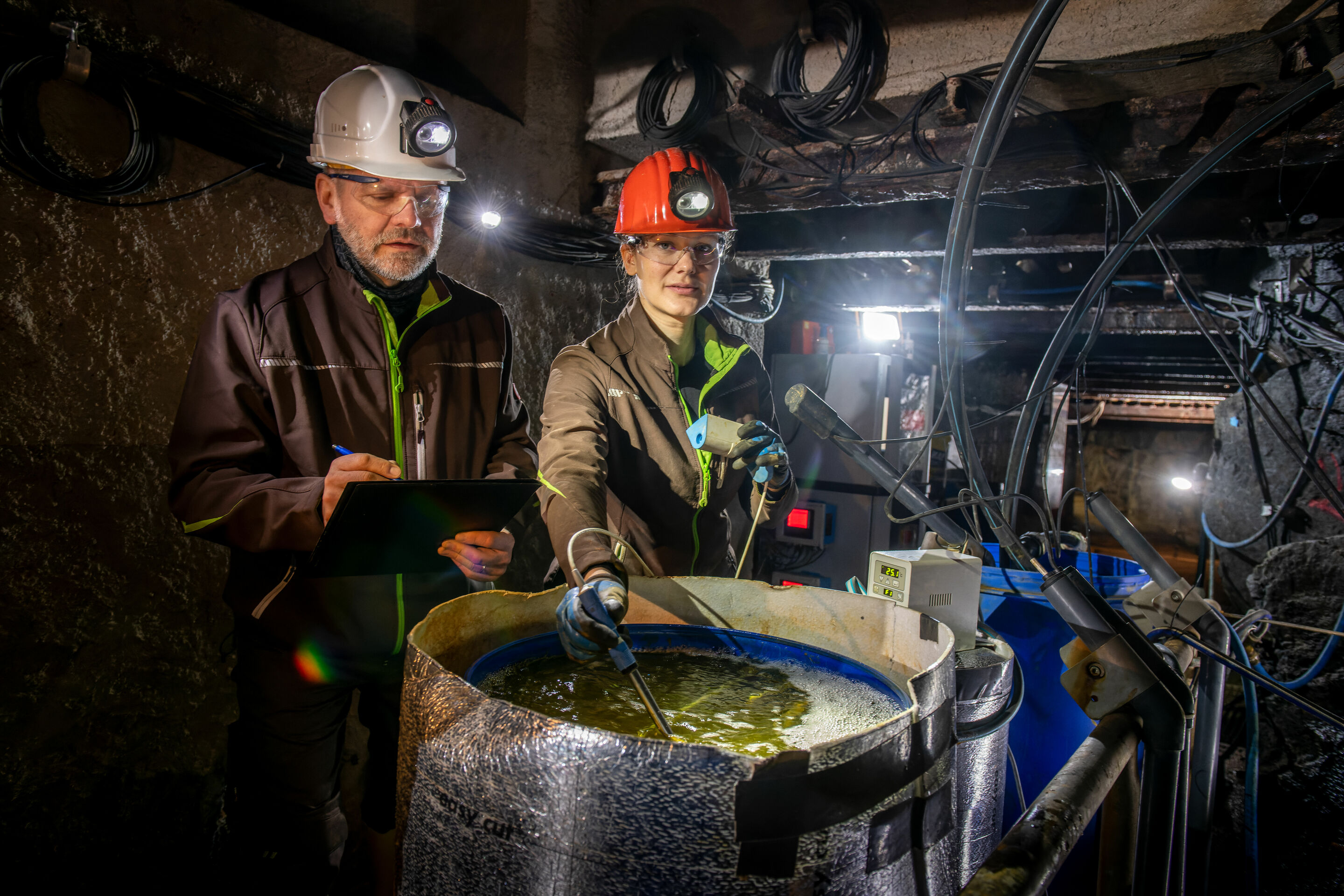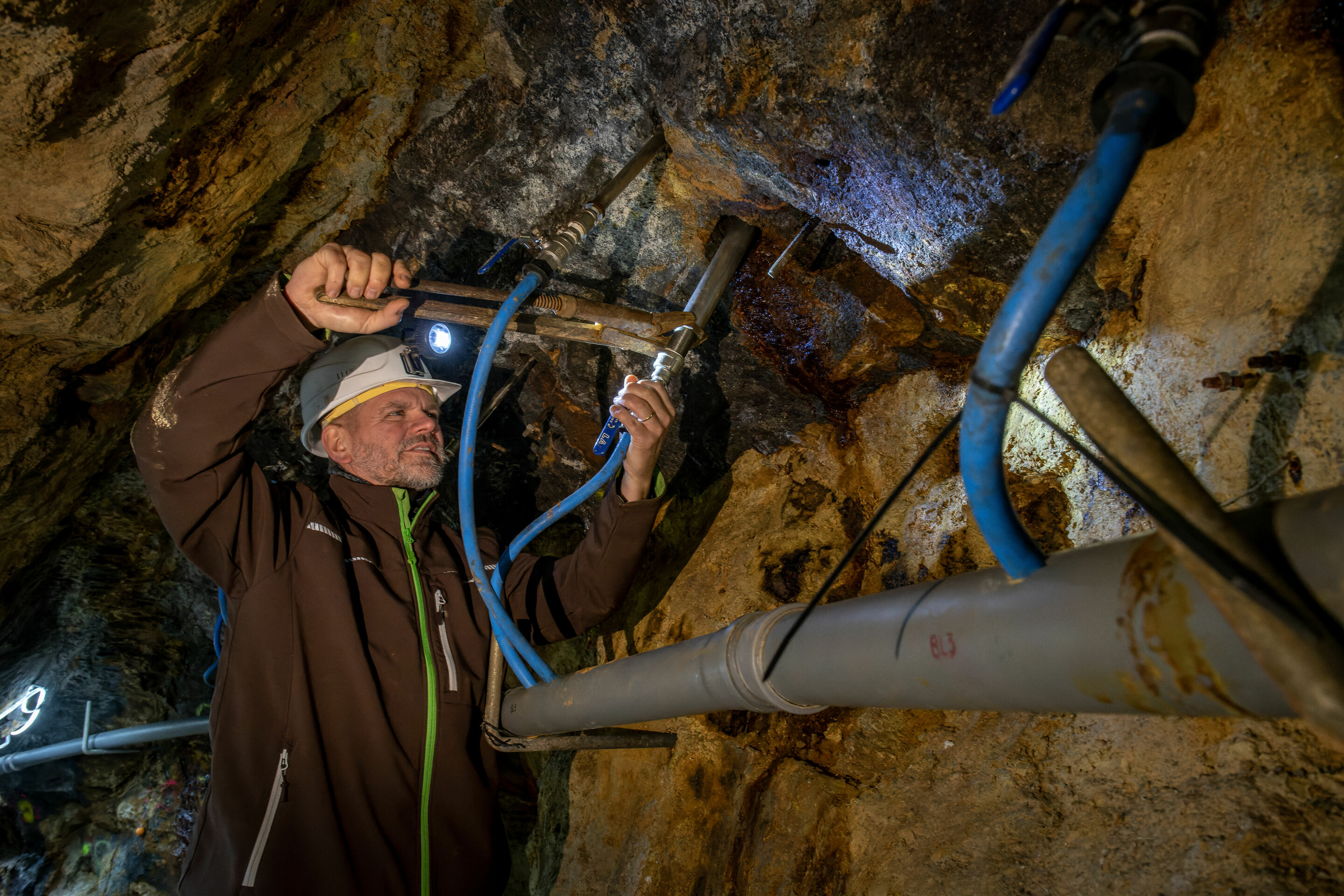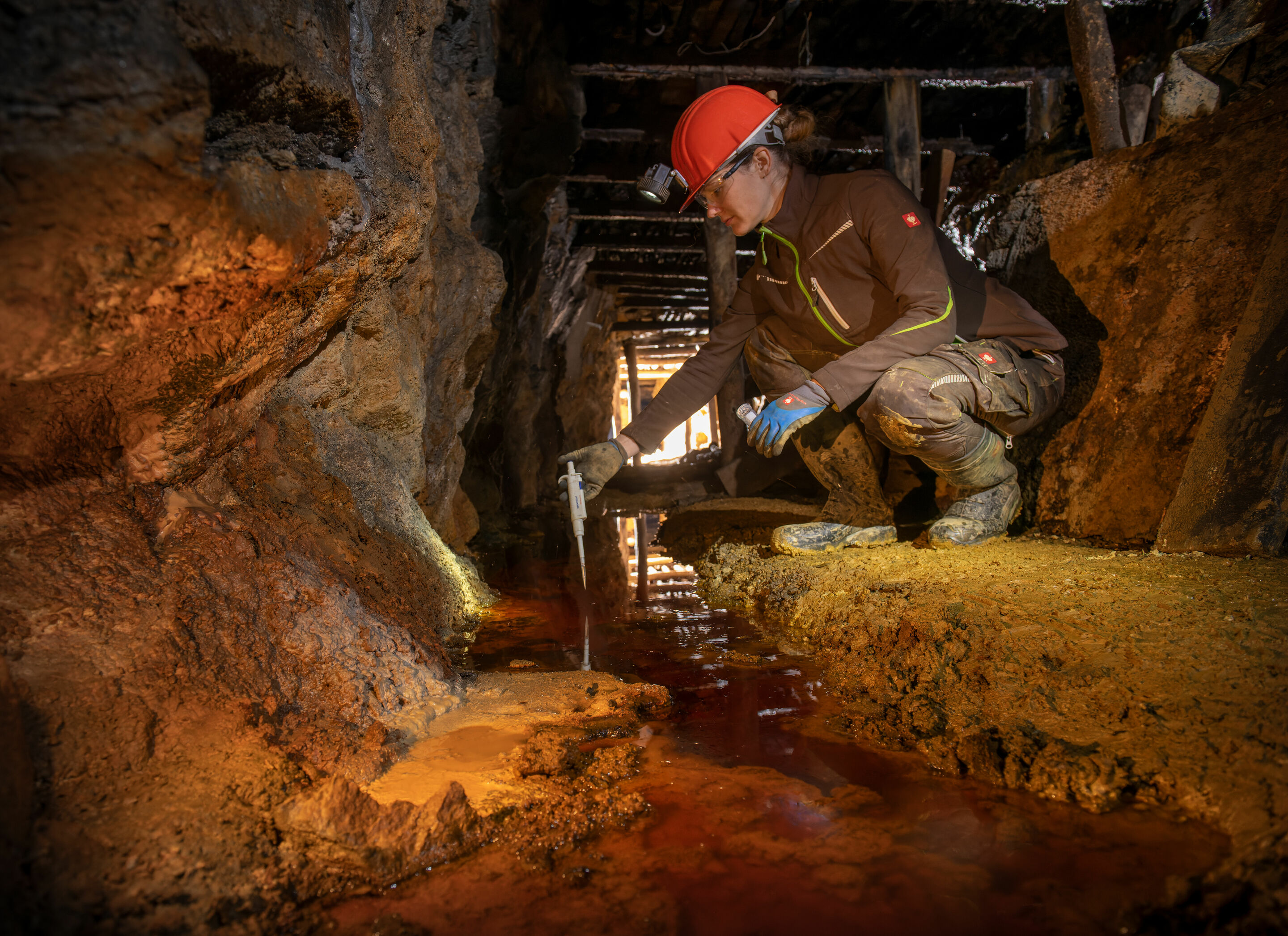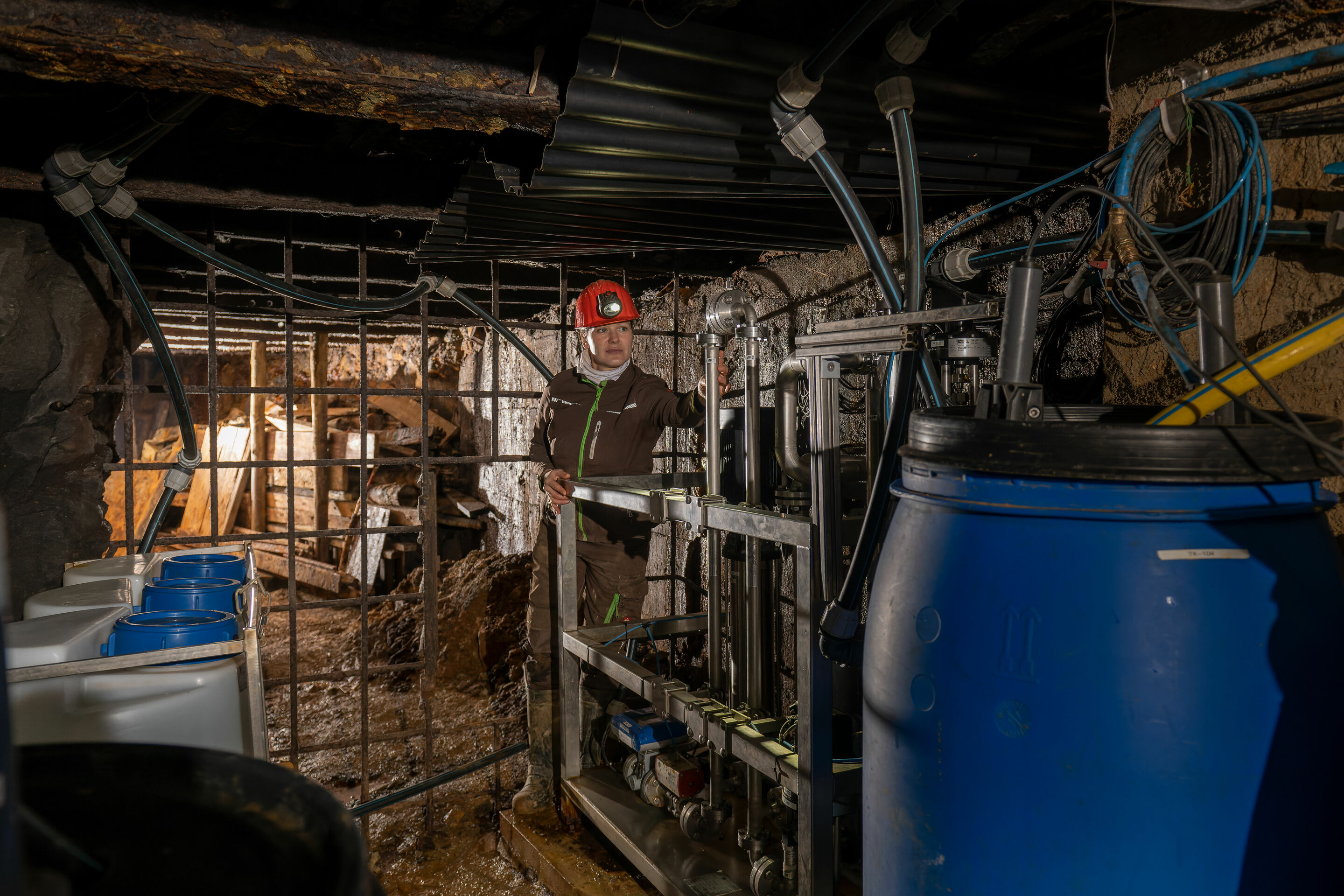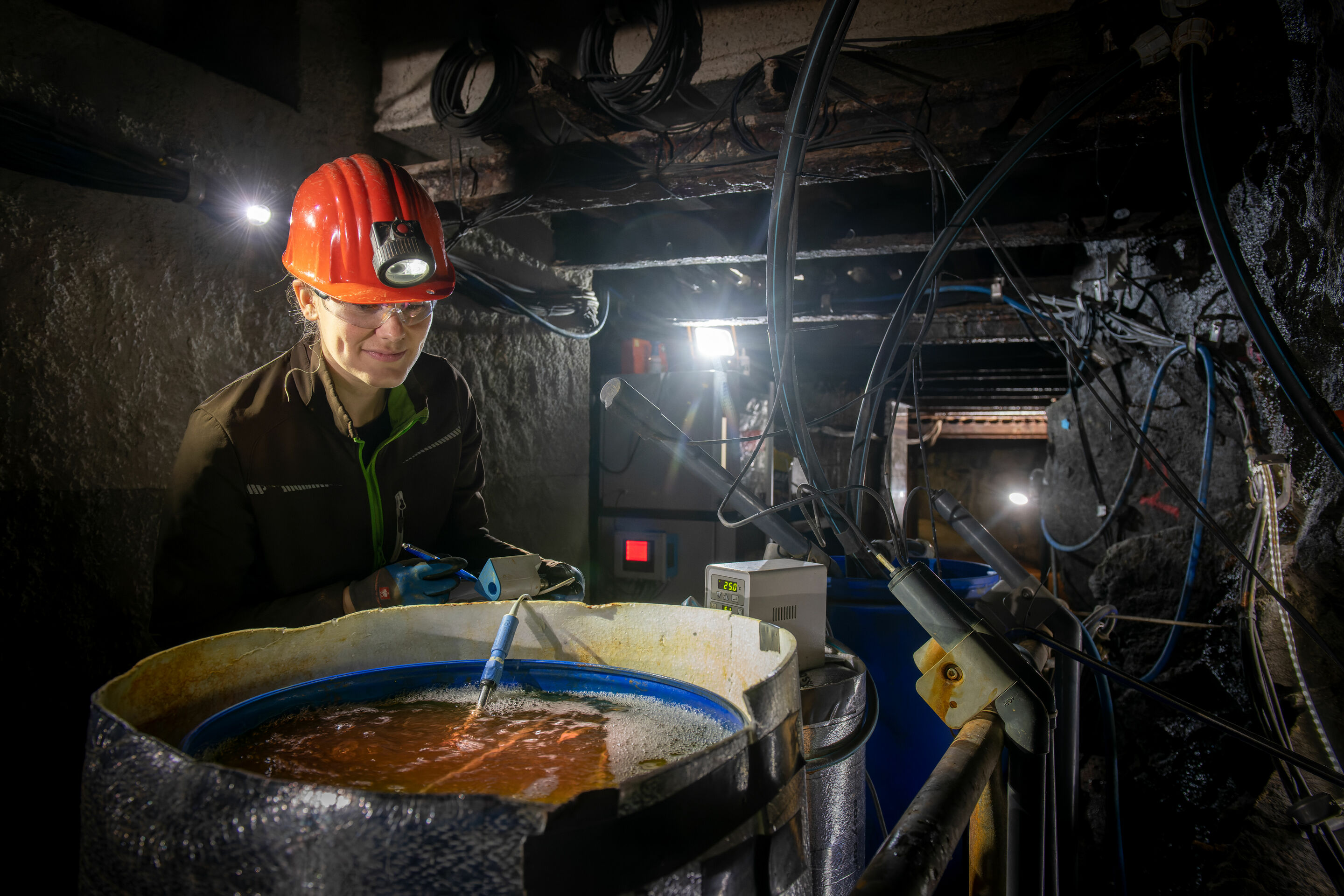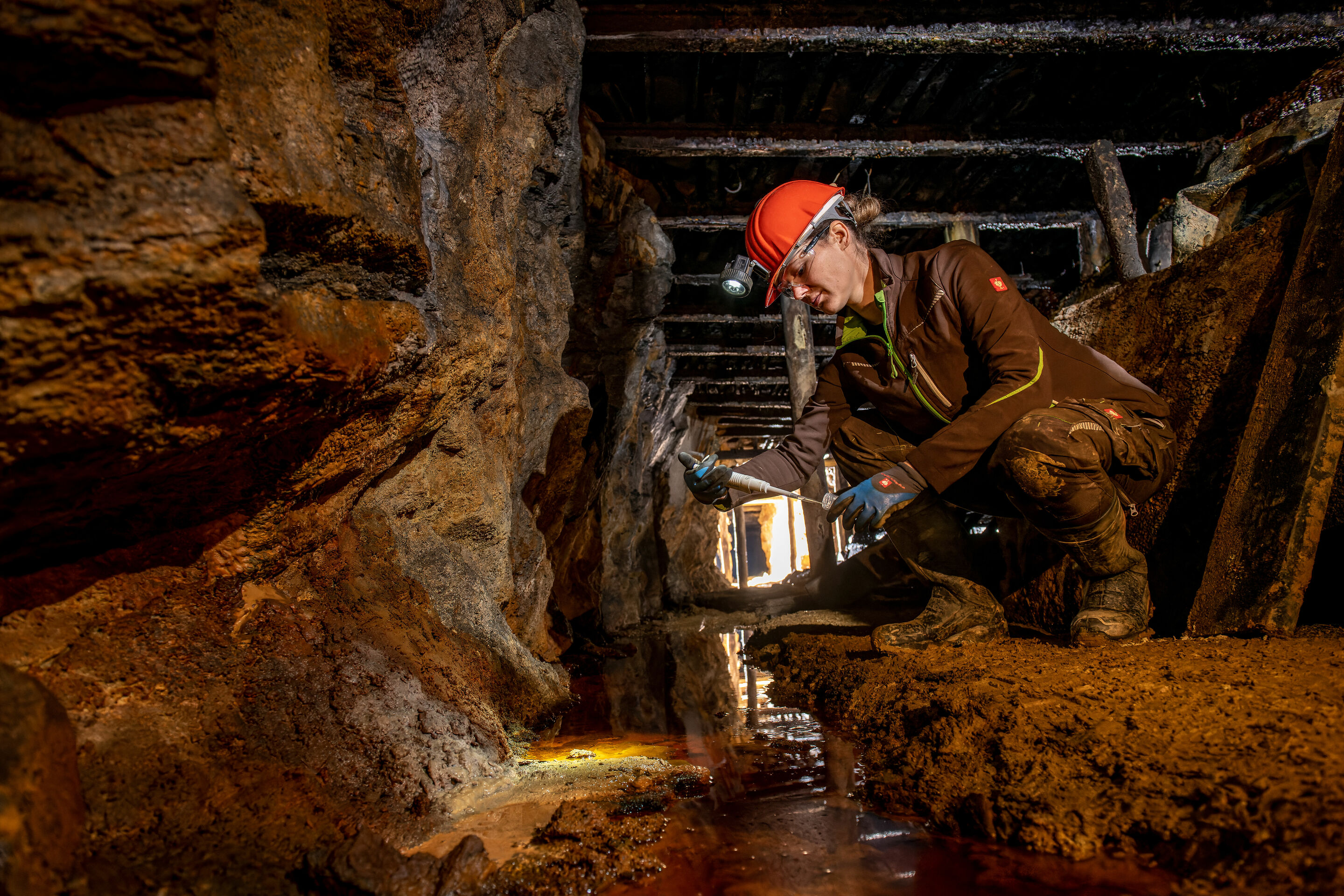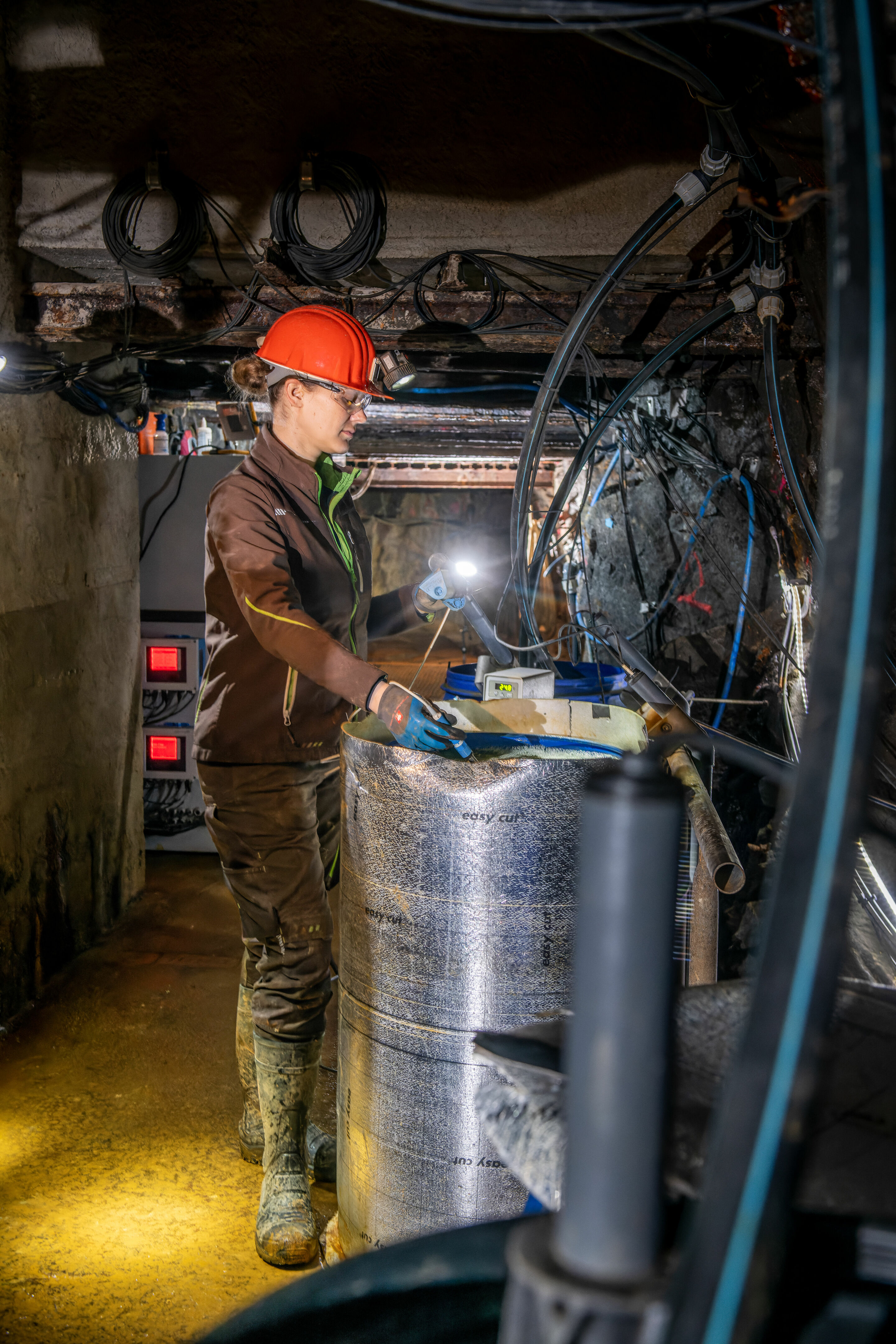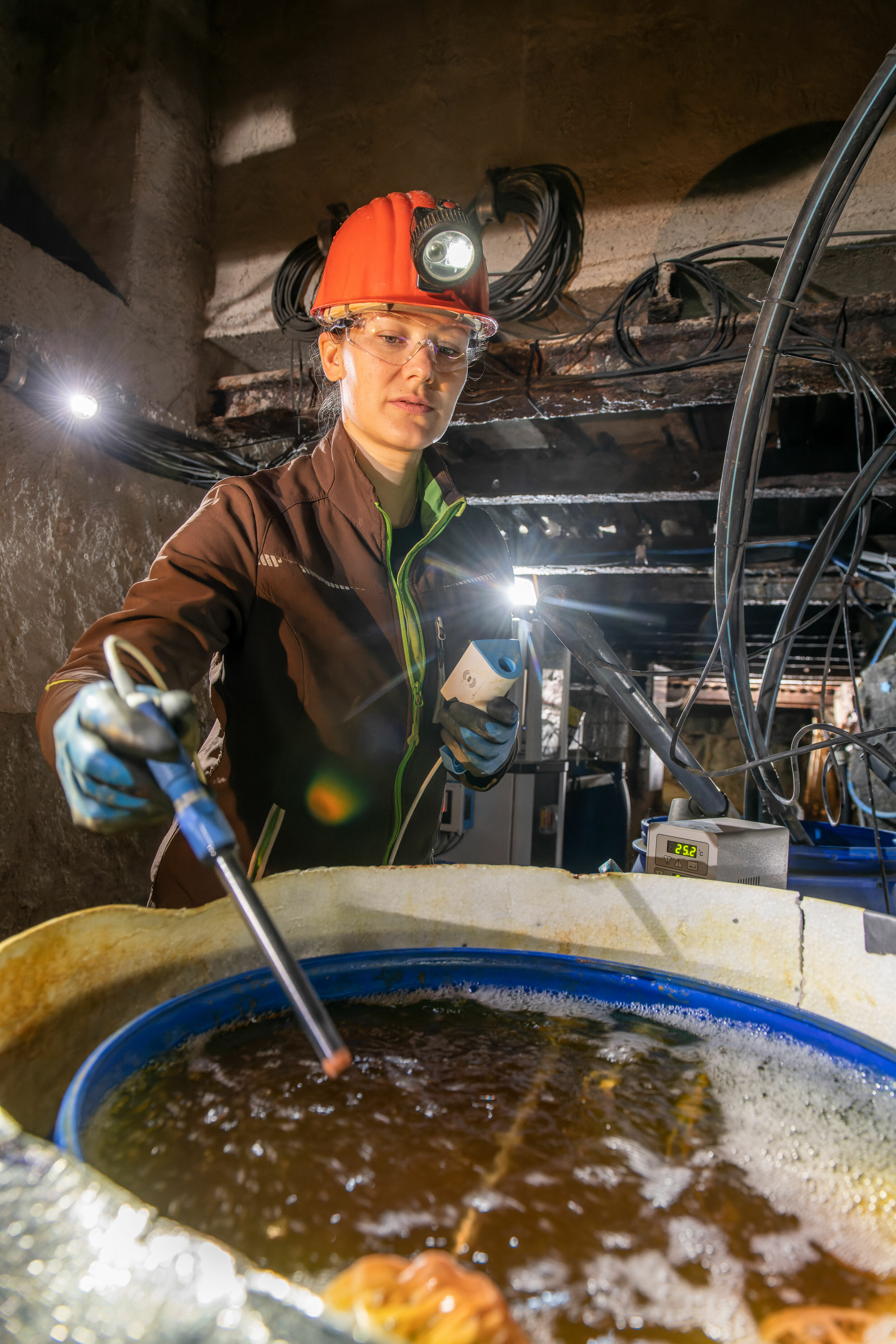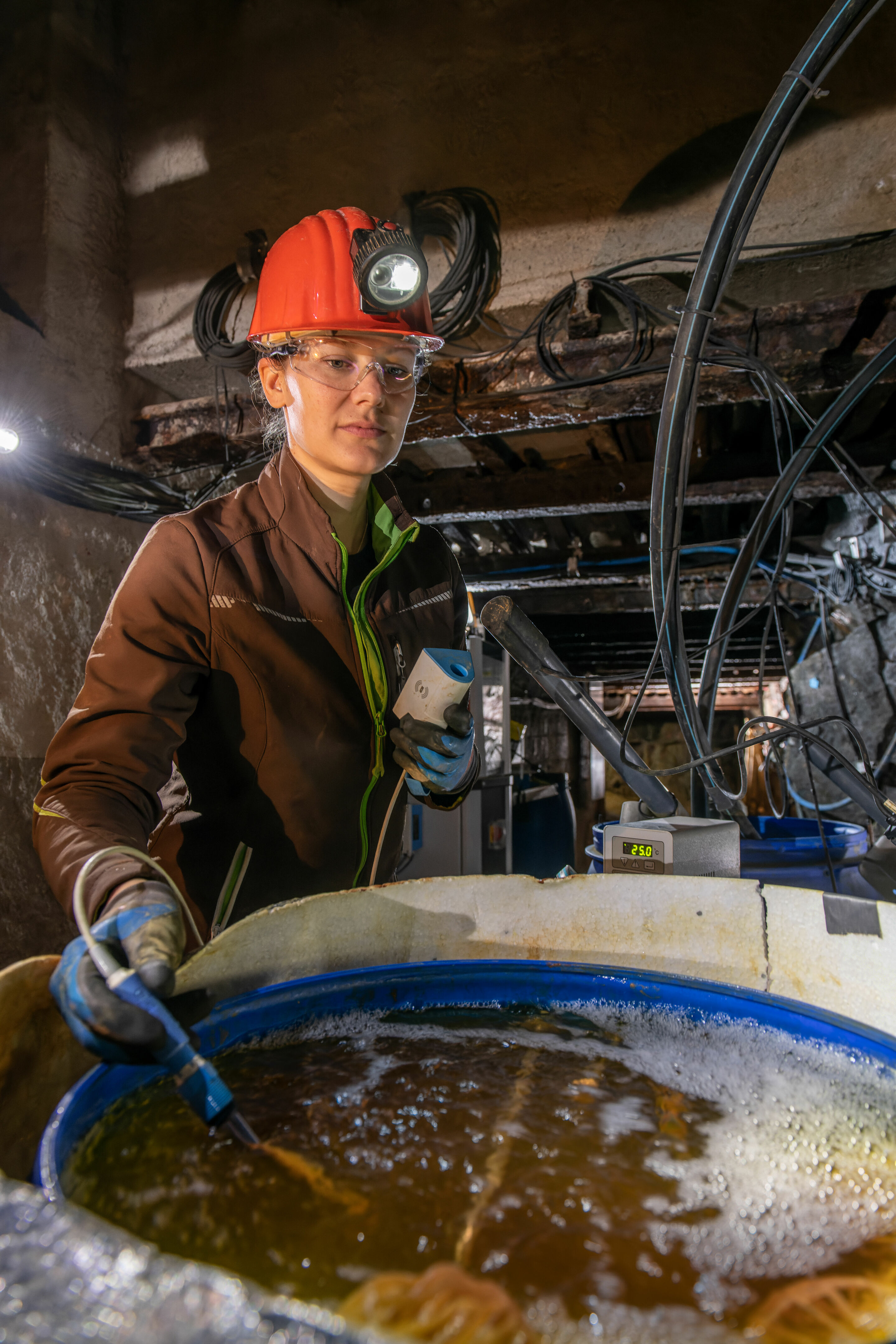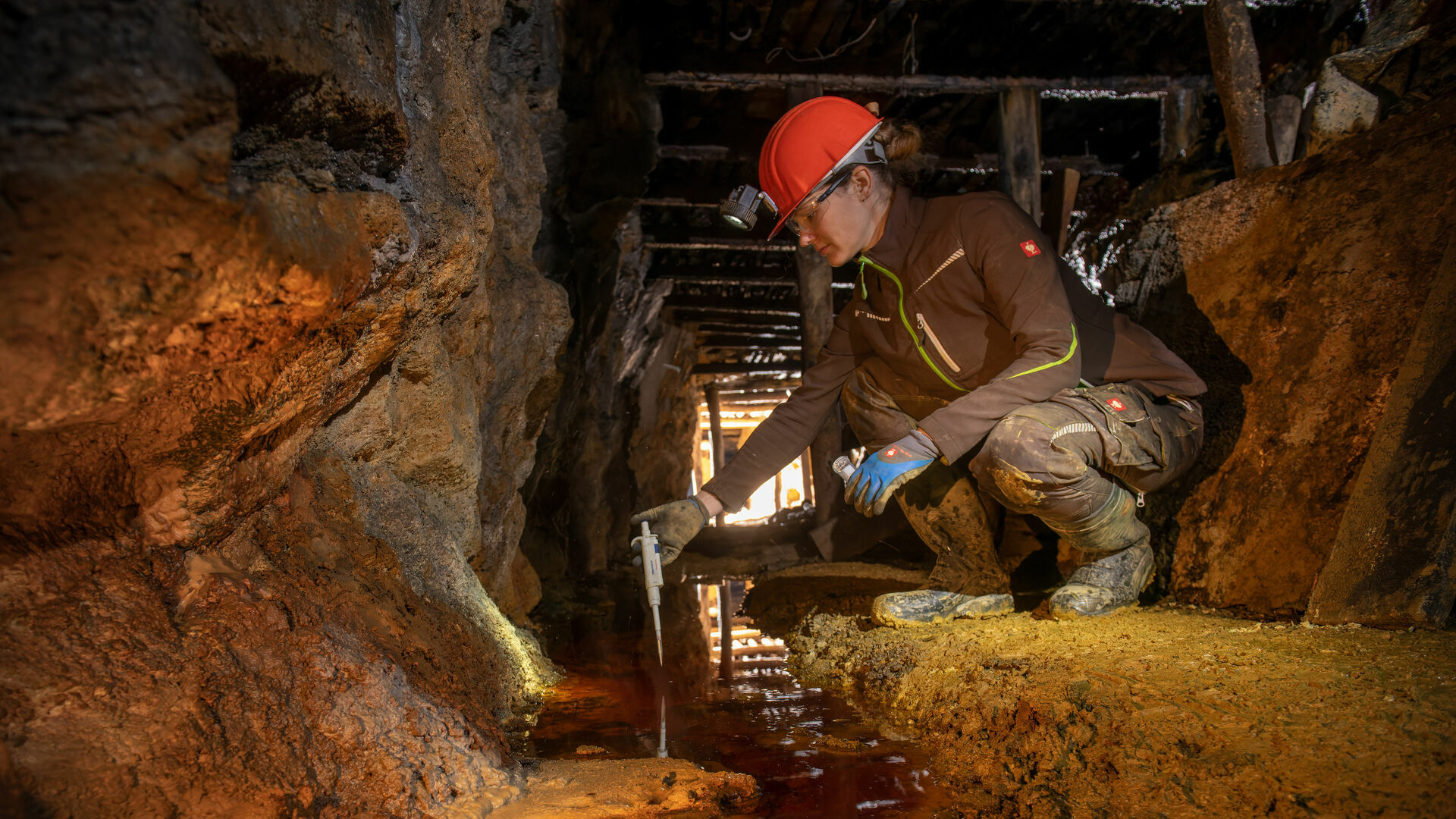Membrane mining: Sustainable extraction of high-tech metals
- Research: Audi Environmental Foundation promotes innovative mining approach
- Underground: Microinvasive process and membrane technology protect the environment
- Cooperations: Partners sought for application at other sites
The Audi Environmental Foundation has joined forces with the Freiberg University of Mining and Technology to research new ways of mining high-tech elements. These metals and so-called rare earths are indispensable for modern technologies such as fiber optics, photovoltaics, and semiconductors. Membrane technology is used to mine the raw materials underground in an environmentally friendly and sustainable manner.
As depletable resources, metallic raw materials are needed for many future technologies, including electromobility. The high-tech metals indium and germanium, cobalt, lithium, and rare earths are on the 2020 list of critical raw materials for the EU. This list of economically critical raw materials with a high supply risk is intended to help in the negotiation of trade agreements as well as drive research, innovation, and sustainable procurement.
Many primary raw materials are found in only a few countries worldwide. Their geographic distribution is uneven, and they are difficult to access. In some cases, they occur in such small quantities that extraction is unprofitable. Moreover, mining activities have a drastic impact on the environment. Reason enough for the Audi Environmental Foundation, together with the Institute of Thermal, Environmental and Resources’ Process Engineering at the Freiberg University of Mining and Technology, to establish alternative extraction methods for securing raw materials. The two-year research project addressed the question of how to make mining more sustainable. To this end, the researchers put theory into practice both in the laboratory and underground in real operating environments in a research mine.
Combination of methods for sustainable extraction of high-tech elements
The aim is to extract high-tech elements from ores without destroying the natural environment through large-scale drilling and blasting. In contrast to conventional ore mining, microinvasive methods similar to modern surgical practices are used here. This has several advantages: No heavy machinery, much less energy, and fewer chemicals are used, and there is also no damage to the landscape. “The process is environmentally friendly and innovative, as major mining activities are largely avoided and even small quantities of ore can be extracted,” says Rüdiger Recknagel, Director of the Audi Environmental Foundation. According to Recknagel, this strengthens import independence, thus increasing supply security.
The process, known as in-situ bioleaching, was developed and optimized in the laboratory before finally being tested under real conditions in the research mine at the Freiberg University of Mining and Technology. It works by having researchers drill small holes in the ore vein underground. Through leaching, the valuable elements are dissolved from the ore with the help of microorganisms that are already present in the mine. “The bacteria are little miners that help transfer the metal ions to a solution,” explains Roland Haseneder of the Institute of Institute of Thermal, Environmental and Resources’ Process Engineering Through this process, some of the mineral components dissolve. The experts combine this step with direct two-stage membrane treatment. “Working on site means there are no transport costs or logistics efforts,” says Haseneder. Additionally, the plant separates the microorganisms and returns them to the leaching process in the spirit of a circular economy.
The aim of this process is to separate and enrich indium and germanium from a multicomponent mixture. These two strategic metals are necessary for an array of high-tech products such as flat screens, touch screens, navigation systems, fiber optic technology, computer chips, photovoltaic systems, and automotive bearings.
Underground laboratory and field tests prove efficiency
The experts wanted to find out how the system would perform at a depth of 147 meters under conditions with over 90 percent humidity and dripping acidic water at ten degrees Celsius. Important parameters included the composition of the bacterial solution, enrichment with target elements, the process parameters used, and the yield of target elements. The tests proved the efficiency of the system. “We adjusted the pressure, flow rate, and purification processes to significantly improve separation,” Haseneder says. Haseneder also says the separation efficiency for germanium was increased by 20 percent compared to the laboratory experiments.
In the future, this sustainable extraction process will also be used for other elements such as cobalt in other deposits. The process is especially suitable for the extraction of valuable elements both from low-grade ores with a low concentration of valuable materials and from secondary raw materials well as for use at existing mining sites using the infrastructure that is already in place. Haseneder also suggests the process could find application in other fields such as urban mining. At the Freiberg University of Mining and Technology, the search for suitable partners for application at other sites is in full swing. The ultimate vision is to implement microinvasive mining globally.
About the Audi Environmental Foundation
The Audi Environmental Foundation is an active supporter of research into new technologies and scientific methods for a livable future. Its stated mission is to help protect the environment and to create and promote ways to act sustainably. The foundation particularly focuses on advancing and developing environmentally friendly technologies, environmental education programs, and efforts to protect the natural foundations of human, animal, and plant life. It was founded in 2009 by AUDI AG as a wholly owned subsidiary and is part of the company’s work in support of social and environmental causes.
